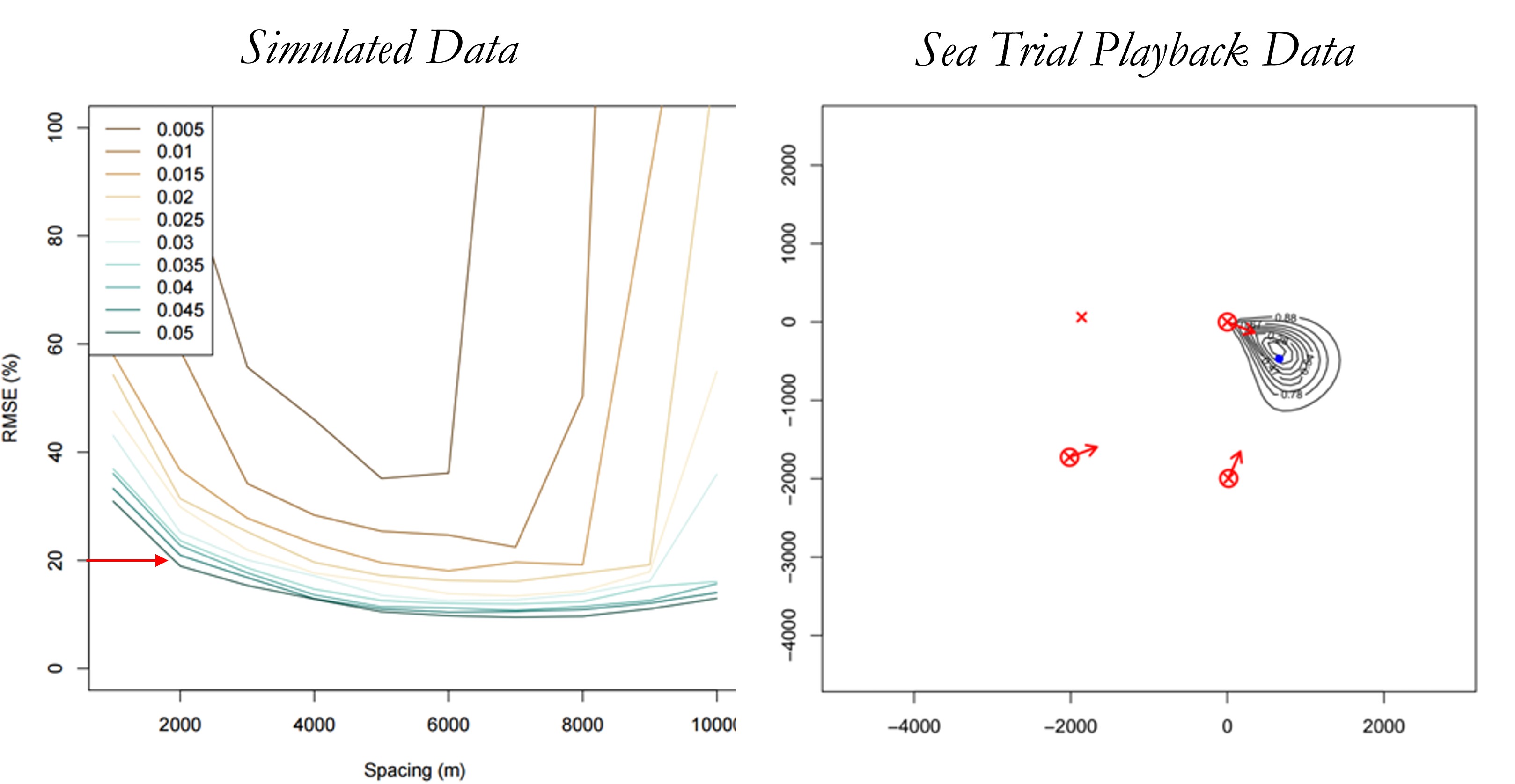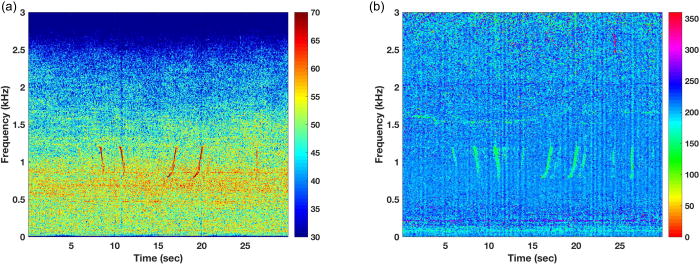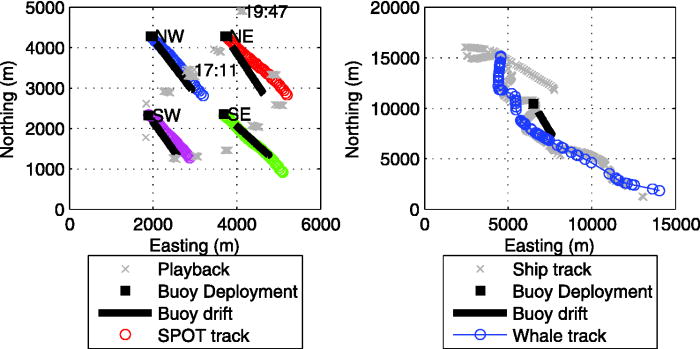Methods
Detail sonobuoy methods here, provide links to info. Also include summaries/links to papers (thode, miller, navy project, ASCR info, etc)
Field Methods
Sonobuoys are expendable drifting recorders housed in a compact cylinder for deployment from ships or airplanes. When the buoys are deployed, the hydrophone drops to a pre-determined depth and a float inflates at the surface. The multi-plexed signal containing the audio and DIFAR information is transmitted from an antenna embedded in the float; this signal can be received using a VHF receiver. Specialized receivers are required to obtain the full low-frequency audio, and specialized software is required to demultiplex the DIFAR signal. Field methods have evolved over the years from analog to digital formats, and a summary of current field methods (as of 2019) can be found in [@rankin]
Playback Experiment and Methods Development
In 2016, SWFSC conducted a playback experiment for the purpose of estimating the precision and accuracy of bearing angle estimation. This was part of a larger Navy-funded project to investigate the potential for using sonobuoys as a tool to estimate cetacean density in offshore waters ([Rankin et al. 2017(https://github.com/SAEL-SWFSC/SWFSC-PAM-Sonobuoys/tree/main/supplement/Rankin_SBFinalReport_Rep2017.pdf)]). This data has been useful for methods development on several projects, and this data is publicly available for future projects (Link to NCEI Data Portal).
Acoustic Spatial Capture Recapture

SWFSC collaborated with Ben Stevenson (University of Aukland) to evaluate the potential use of Acoustic Spatial Capture Recapture (ASCR) methods to estimate call density across clustered sonobuoys. While a simulation suggested these methods should be feasible, application to real data identified a number of complications and errors that precluded adoption of ASCR for these cases. Links to summaries of the sonobuoy SCR models and application to real data.
Azigram Displays for DIFAR Sonobuoys

As part of a larger methods paper led by Aaron Thode (Scripps Institution of Oceanography), this playback data provided a means of testing the capabilities of using Azigrams to enhance the accuracy of bearing measurements of weak frequency-modulated signals. See Thode et al. 2019 for more information.
Estimating Sonobuoy Drift

We attached GPS to each of the four sonobuoys during the playback experiment, which provided high resolution tracking. This data provided a valuable dataset to test new methods for estimating sonobuoy drift developed by [Brian Miller of the Australian Marine Mammal Center](https://www.marinemammals.gov.au/about/staff-and-students/brian-miller/). See Miller et al. 2018 for more information.